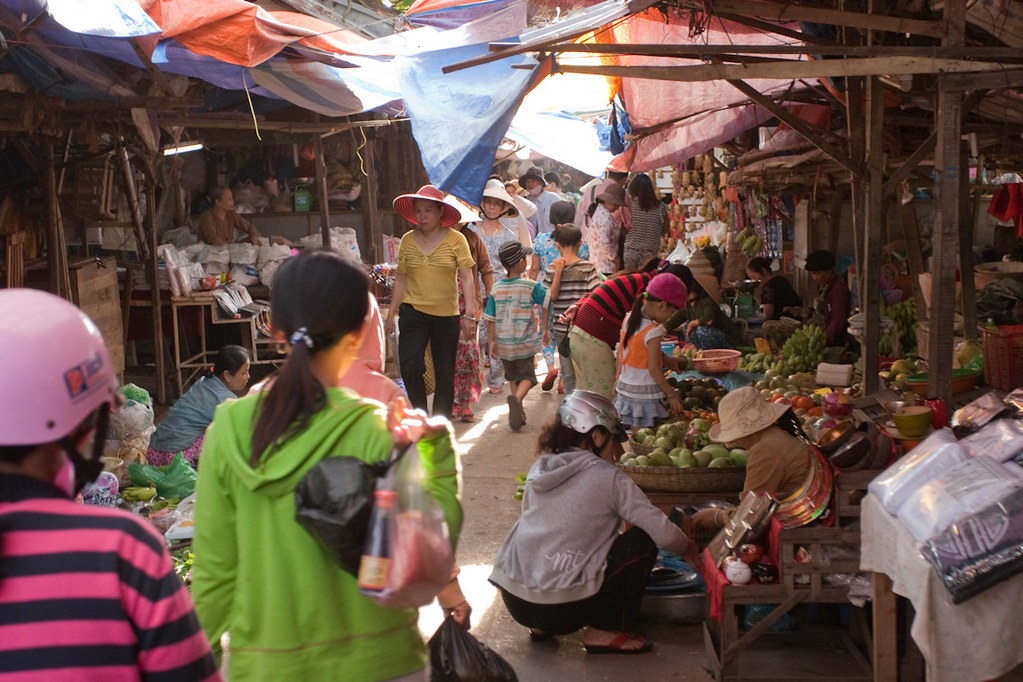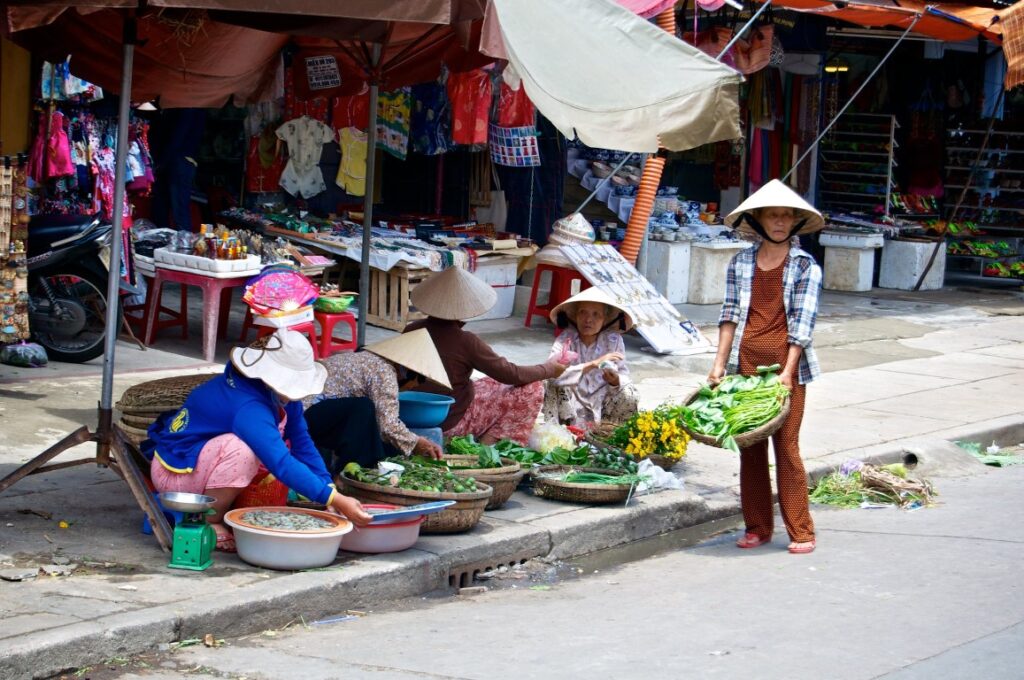A journey through Vietnam is incomplete without immersing oneself in the vibrant atmosphere of its local markets. Among these, the Hoi An Central Market stands out not only for its rich history but also for its unique blend of cultural and commercial offerings that have been captivating visitors for centuries.

The Historical Significance of Hoi An Central Market
Dating back to the 15th century, the Hoi An Central Market, or Chợ Hội An, has been a bustling trading hub for over four hundred years. Its longevity and resilience are remarkable, having withstood the rise and fall of empires and the ravages of war. This market, nestled in what was once a prominent trading port on the Silk Road, now serves as a testament to the enduring spirit of Hoi An, a city that has managed to preserve its historic architecture amidst modern restorations.
A Treasure Trove of Handicrafts and Local Produce
The market is a haven for those seeking traditional Vietnamese handicrafts. Visitors can find an array of silk products, textiles, and the famous handmade lanterns of Hoi An. Additionally, it is renowned for its tailor shops offering custom-made clothing—a specialty of the area. The array of local produce, spices, and other goods further enriches the shopping experience, providing a glimpse into the daily lives and culinary traditions of the local residents.

An Immersive Market Experience
The experience of walking into the mustard yellow building of the market is akin to entering a different world. The fragrant scents of spices greet visitors under a high vaulted ceiling supported by yellow pillars. The market’s indoor section is impressive, but it is the outdoor vendors and informal stalls that often capture the hearts of visitors. Here, one finds a colorful display of tropical fruits and vegetables, with vendors donning traditional leaf-woven hats—a scene that encapsulates the essence of Vietnamese culture and trade.
Access and Exploration in the Heart of Hoi An
Located along the Thu Bon River, the Hoi An Central Market is easily accessible by foot or bike, in line with the vehicle-free policy of the ancient town. This accessibility adds to the charm of exploring the market, allowing visitors to leisurely traverse the riverside and soak in the lively atmosphere. For those coming from outside Hoi An, taxis and shuttles are available, with drop-off points near key intersections around the market.
Practical Tips for Visitors
The market, divided into sections for prepared foods, spices and cooking utensils, fresh meat and vegetables, and fish, opens its doors from 6 am until around 6 pm. For the freshest produce and a quieter shopping experience, an early morning visit is recommended. However, those seeking a more vibrant atmosphere should consider an early evening visit.

A Market that Embodies the Spirit of Vietnam
The Hoi An Central Market is more than just a place for commerce; it is a cultural hub that reflects the history, craftsmanship, and daily life of the Vietnamese people. Its ability to seamlessly blend the past with the present makes it a must-visit destination for anyone looking to experience the true essence of Vietnam. Whether it’s for the rich history, the exquisite handicrafts, or the simple joy of wandering among locals, the Hoi An Central Market promises an experience that is as enriching as it is unforgettable.
 Asia Pacific Travel Co., Ltd, established in 2002 under the visionary leadership of Mr. Nguyen Giang Nam, stands as a testament to the evolution and growth of the inbound tourism industry in Vietnam. With over two decades of operation, this pioneering travel agency has not only offered immersive experiences ranging from short-day tours to the picturesque landscapes of Ha Long, Hoa Lu, and Ninh Binh, but has also expanded its reach with representative offices in major Vietnamese cities. Their commitment to harnessing the power of information technology and relentless pursuit of professional excellence has made them a preferred choice for both domestic and global travelers, keen on discovering the authentic charm of Vietnam.
Asia Pacific Travel Co., Ltd, established in 2002 under the visionary leadership of Mr. Nguyen Giang Nam, stands as a testament to the evolution and growth of the inbound tourism industry in Vietnam. With over two decades of operation, this pioneering travel agency has not only offered immersive experiences ranging from short-day tours to the picturesque landscapes of Ha Long, Hoa Lu, and Ninh Binh, but has also expanded its reach with representative offices in major Vietnamese cities. Their commitment to harnessing the power of information technology and relentless pursuit of professional excellence has made them a preferred choice for both domestic and global travelers, keen on discovering the authentic charm of Vietnam.


